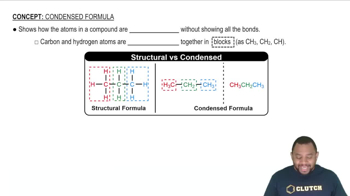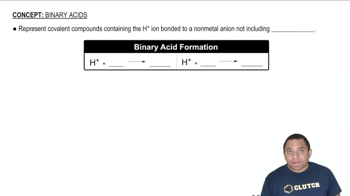Here are the essential concepts you must grasp in order to answer the question correctly.
Condensation Reaction
A condensation reaction is a chemical process where two molecules combine to form a larger molecule, releasing a small molecule, often water, as a byproduct. In the case of boric acid forming tetraboric acid, the reaction involves the loss of water as boric acid molecules link together, resulting in a more complex structure.
Recommended video:
Balancing Chemical Equations
Balancing chemical equations is the process of ensuring that the number of atoms for each element is the same on both sides of the equation. This is crucial for obeying the law of conservation of mass, which states that matter cannot be created or destroyed in a chemical reaction. Each side of the equation must reflect the same total number of each type of atom.
Recommended video:
Balancing Chemical Equations
Boric Acid and Tetraboric Acid
Boric acid (H3BO3) is a weak acid that can undergo polymerization to form tetraboric acid (B4O7(OH)2), which contains multiple boron atoms. Understanding the structural differences and the molecular formula of these compounds is essential for writing the correct balanced equation, as it highlights how the condensation process alters the molecular composition.
Recommended video:
 Verified step by step guidance
Verified step by step guidance


